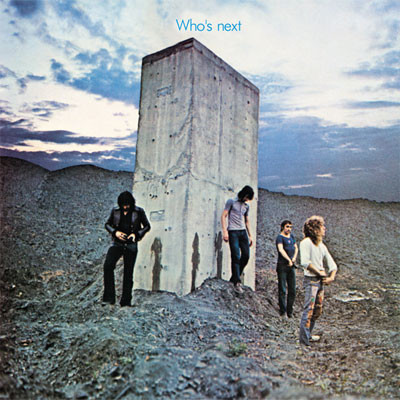For decades, a classic rock anthem by The Who has been mistakenly known by a phrase lifted from its own lyrics: “Teenage Wasteland.” However, that powerful phrase, sung with raw emotion, is actually part of a much more uniquely titled song: “Baba O’Riley.” This isn’t just a minor detail for music aficionados; understanding the true title unlocks a deeper appreciation for the song’s rich origins and the diverse influences that shaped its creation.
The Genesis of “Baba O’Riley”: A Meeting of Minds
“Baba O’Riley” was born from the creative mind of Pete Townshend, the prolific songwriter and guitarist of The Who. The title itself is a fascinating amalgamation, a tribute to two seemingly disparate yet profoundly influential figures: Meher Baba and Terry Riley.
Meher Baba was an Indian spiritual guru of considerable renown, who declared himself to be the reincarnation of God. His philosophical impact on Townshend is undeniable. On the other hand, Terry Riley was an American minimalist composer and musician whose innovative approach to music, particularly his keyboard riffs, resonated deeply with Townshend’s artistic sensibilities. Riley’s minimalist style significantly shaped the musical texture of “Baba O’Riley,” especially the iconic synthesizer introduction that is instantly recognizable.
 The Who's Next album cover featuring band members in an abstract, powerful pose, representing the raw energy of their music
The Who's Next album cover featuring band members in an abstract, powerful pose, representing the raw energy of their music
From “Lifehouse” Dream to “Who’s Next” Reality
Originally, “Baba O’Riley” was conceived as a cornerstone of a larger, ambitious project called Lifehouse, intended as a follow-up to The Who’s rock opera Tommy. Townshend envisioned Lifehouse as a multimedia concept album and film, a futuristic rock opera exploring themes of societal breakdown and spiritual seeking. The original rendition of “Baba O’Riley” within the Lifehouse framework stretched to an impressive 30 minutes, indicative of the project’s grand scope.
In the narrative of Lifehouse, the “Teenage Wasteland” phrase held significant meaning. The song was to be sung from the perspective of Ray, a Scottish farmer escaping a dystopian London, the “Teenage Wasteland,” with his family. This context imbued the lyrics with a sense of desperation and a yearning for escape from societal decay.
However, the Lifehouse project, in its ambitious entirety, unfortunately never materialized. Despite this setback, the strength of the individual songs was undeniable. The Who salvaged many of these compositions, including the powerful “Baba O’Riley,” and distilled them into their 1971 album, Who’s Next. This album became one of their most critically acclaimed and commercially successful works, cementing “Baba O’Riley” as a rock classic, even if its intended Lifehouse context was largely lost on the general public.
Unpacking the Layers of “Baba O’Riley”
Beyond the misnomer and its intriguing title origins, “Baba O’Riley” is a song packed with interesting details:
- The mesmerizing synthesizer intro, a defining feature of the song, is famously played from a taped recording in live performances due to its complexity.
- Surprisingly, the distinctive violin jig that concludes the song was an idea proposed by Keith Moon, The Who’s legendary drummer, showcasing his creative input beyond percussion.
- While a violin isn’t always practical for live shows, The Who often substitute the violin part with a harmonica, maintaining the song’s energetic outro.
- Roger Daltrey’s powerful lead vocals are central to the song, but Pete Townshend himself delivers the iconic lines, “Don’t cry. Don’t raise your eye. It’s only teenage wasteland,” adding a poignant layer to the performance.
- “Baba O’Riley”‘s enduring impact is reflected in its accolades, including its placement at number 340 on Rolling Stone’s 500 Greatest Songs of All Time and its induction into the Rock and Roll Hall of Fame as one of the 500 “Songs That Shaped Rock and Roll.”
In conclusion, while “Teenage Wasteland” might be a catchy and evocative misnomer, the true title, “Baba O’Riley,” is a key to understanding the song’s deeper artistic and spiritual roots. It’s a testament to Pete Townshend’s diverse inspirations and The Who’s ability to synthesize complex ideas into enduring rock masterpieces. So next time you hear that iconic opening riff, remember, you’re listening to “Baba O’Riley,” a song with a story as captivating as its sound.
